May 14, 2025 | 01:08 GMT +7
May 14, 2025 | 01:08 GMT +7
Hotline: 0913.378.918
May 14, 2025 | 01:08 GMT +7
Hotline: 0913.378.918
Realizing that consumers' demand for clean, safe vegetables is increasing, Mr. Pham Ngoc Trong in Thuan Duc commune (Dong Hoi city, Quang Binh province) experimented with growing vegetables by the aeroponics method on standing pillars, which showed high efficiency.
Mr. Trong said the model of growing aeroponic vegetables by standing pillars operates on the basic principle of spraying a nutrient-rich mist directly on the roots to help the plants grow and develop in the best conditions.
“Nutrients used to spray plants are completely organic and prepared in certain proportions. The model gives vegetable products that are clean, safe, and good for human health,” Mr. Trong said.
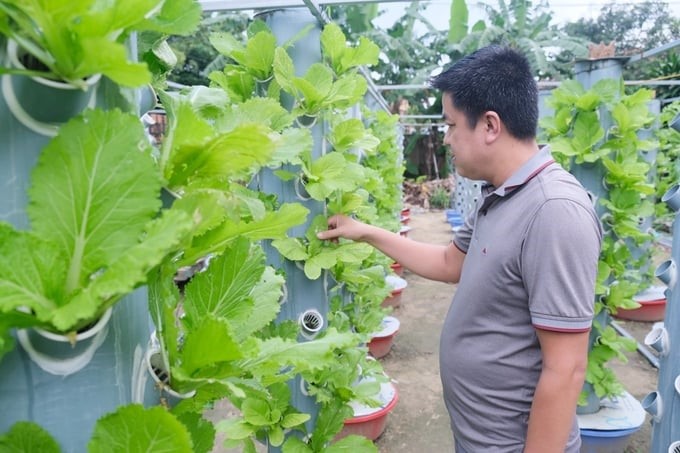
The aeroponic vegetable growing model of Mr. Pham Ngoc Trong's family. Photo: Tam Phung.
Initially, Mr. Trong invested in 40 aeroponic vegetable growing pillars. Each pillar is about two meters high and placed in a plastic pot, with a system of pipelines connecting the plastic pots together so that when pumping nutrients, all pots receive them.
Seeds, after being sown in plastic boxes with growing media, will be placed in the holes of the pillars. Each pillar has 42–45 planting holes, and each hole can grow 1–3 vegetable plants, depending on the type. Every day, nutrient-rich water is pumped and atomized onto the pillar. Plant roots receive nutrients and grow well.
When growing vegetables by the aeroponics method, nutrients will be atomized around the roots by a machine, and excess water will flow to the plastic pot below and continue to circulate for use. Besides, nutrients are pumped and sprayed according to the installation mode, which is easy to adjust depending on the size of the plant. Nutrients are easily absorbed by plants, helping them grow quickly and reducing production costs.
Vegetables are placed into small holes drilled in plastic pipes. The roots are located inside the pipe, and the stems are facing outward to receive light for photosynthesis. The atomizing system periodically sprays a solution of water and nutrients into the pipe for the roots to directly absorb.
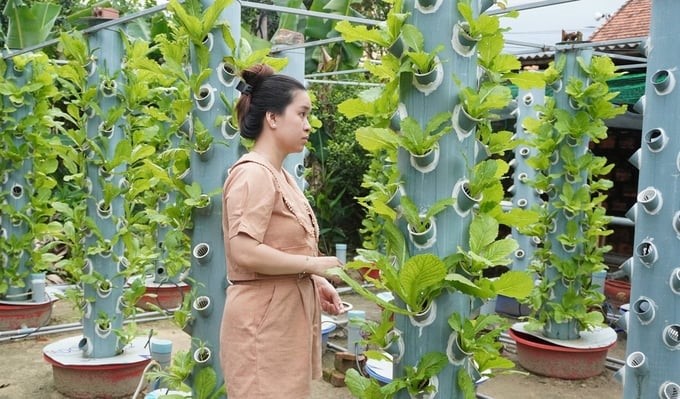
Aeroponic vegetable production is very convenient to meet the standards of organic vegetables. Photo: Tam Phung.
With this method, nutrients for vegetables will be controlled right from the beginning, without the need to use land. Thereby, the emergence of pests and diseases is limited without worrying about residues of chemicals or heavy metals. Vegetables are not also contaminated with harmful organisms and microorganisms in the soil, so they are completely clean and very convenient to move towards production that meets the requirements of organic standards.
According to Mr. Trong, with this method, growers will save area, which is very suitable for city people who do not have land to grow clean vegetables. “Each family only needs 4–6 m2 of area, such as a garden space, a corner of a hallway, or a terrace, to be able to grow vegetables. This both provides a source of clean food for the family and saves costs. In addition, growers can also combine many different types of crops in one model to meet the diverse usage needs of the family," he said.
Currently, Mr. Trong's model has just been experimented with growing on 40 standing pillars. After about 30 days, each pillar yields about 10kg of vegetables, giving an income of about VND 200,000. Each year, 10–12 batches of vegetables can be grown.
Vegetables grown here, such as lettuce, green mustard, cabbage, amaranth, malabar spinach, radish, etc., initially grow and develop well. The vegetables are delicious, crispy, and sweet. “Each batch of vegetables and each pillar can bring an income of about VND 200,000, or over VND 2 million/year. If following the correct process and take care of vegetables well, the income from aeroponic vegetable farming is very high," Mr. Trong said.

Growing aeroponic vegetables takes advantage of even the smallest area and does not require garden land. Photo: Tam Phung.
According to Mr. Trong, most leafy, fruity, and root vegetables can be grown by the aeroponics method, which gives stable yields and ensures nutritional quality. Due to the effectiveness of the aeroponic vegetable garden, Mr. Trong is currently continuing to expand the area and develop the product consumption market.
Not only is he passionate about research, but Mr. Trong is also willing to share the process and experience of growing aeroponic vegetables with many people with the wish to bring farmers new options in agricultural cultivation, especially those living in urban areas and crowded residential areas with a lack of land to grow vegetables.
Translated by Huyen Vu Thu

(VAN) Use of high-quality broodstock and biotechnology is regarded as the most effective approach to ensuring sustainable and economically viable shrimp aquaculture ahead of climate change and the emergence of increasingly intricate disease patterns.
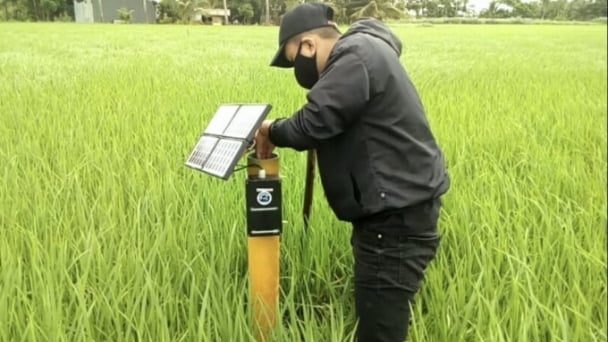
(VAN) Carbon farming is a form of agricultural practices that helps absorb more greenhouse gases than it emits, through smart management of soil, crops, and livestock.

(VAN) This is a key content of the Memorandum of Understanding recently signed between the Vietnam Fisheries Society and Kunihiro Inc of Japan.
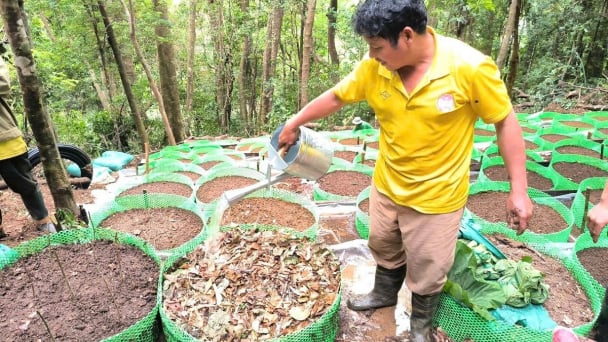
(VAN) To achieve the goal, local authorities and businesses in Kon Tum province have fully prepared the necessary conditions for the new Ngoc Linh ginseng planting season.

(VAN) Jiangsu province is gearing up to host training programs in Phnom Penh, the capital of Cambodia, this year to establish the Fish and Rice Corridor.

(VAN) Le Hoang Minh, representing Vinamilk, shared the company's experience in energy saving and green energy transition for production at a workshop held during the P4G Summit.
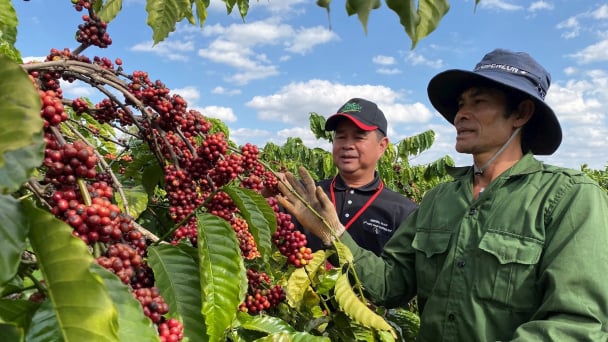
(VAN) Businesses emphasize fairness and equality when integrating social factors into their sustainable development strategies.